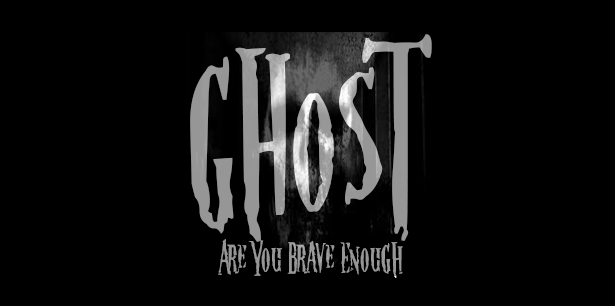- Gary Taylor-Green
- 6 days ago
- 4 min read
If you have ever been fascinated by ghost stories, haunted places, or unexplained phenomena, joining a paranormal group might be the perfect way to dive deeper into this mysterious world. Paranormal investigation groups offer a unique opportunity to learn, explore, and experience the supernatural alongside like-minded enthusiasts. This guide will walk you through everything you need to know about joining a paranormal group, what to expect, and how to get started.
Why You Should Join a Paranormal Group
Joining a paranormal group is more than just chasing ghosts. It is about community, learning, and discovery. Here are some compelling reasons to consider becoming part of a paranormal investigation group:
Shared Knowledge: Groups often include experienced investigators who can teach you how to use equipment and interpret findings.
Safety in Numbers: Investigating haunted locations can sometimes be risky. Being part of a group ensures you have support and backup.
Access to Locations: Many groups have permissions to explore private or restricted sites that individuals cannot access alone.
Structured Investigations: Groups follow protocols and methods that increase the chances of gathering credible evidence.
Social Connection: You will meet people who share your passion and can become lifelong friends.
Whether you are a skeptic or a believer, joining a paranormal group can enrich your understanding and provide thrilling experiences.

How to Join a Paranormal Group
If you are ready to take the plunge, here are practical steps to help you join a paranormal group:
Research Local Groups
Start by searching online for paranormal groups in your area. Websites, social media pages, and forums are great places to find active teams. For example, you can explore the paranormal investigation group blog for insights and contacts.
Attend Public Events or Tours
Many groups host public ghost tours or open investigations. Attending these events allows you to meet members and see how they operate.
Reach Out and Introduce Yourself
Contact the group via email or social media. Express your interest and ask about membership requirements or upcoming meetings.
Understand the Commitment
Some groups require regular attendance, training sessions, or participation in investigations. Make sure you can commit the time and energy.
Learn the Basics
Familiarise yourself with common paranormal investigation tools like EMF meters, digital voice recorders, and infrared cameras. Many groups offer training for beginners.
Respect the Rules and Ethics
Every group has its code of conduct, including respecting locations, privacy, and the paranormal entities themselves.
By following these steps, you can smoothly integrate into a paranormal group and start your journey into the unknown.
What to Expect When You Join a Paranormal Group
Joining a paranormal group is an exciting experience, but it also comes with expectations and responsibilities. Here’s what you can typically expect:
Training and Education
New members often undergo training to understand the equipment, investigation techniques, and safety protocols.
Teamwork
Investigations are collaborative efforts. You will work closely with others, sharing tasks like monitoring equipment, taking notes, and observing phenomena.
Field Investigations
Groups usually conduct investigations at night in reputedly haunted locations such as old houses, castles, or abandoned buildings.
Data Analysis
After investigations, members review recordings, photos, and sensor data to identify any paranormal activity.
Respect for Skepticism
Healthy groups encourage critical thinking and do not jump to conclusions without evidence.
Emotional Preparedness
Paranormal investigations can be intense and sometimes unsettling. Being mentally prepared is important.
Joining a group means embracing both the thrill and the discipline of paranormal research.

Tips for New Members to Get the Most Out of Your Experience
To make your time in a paranormal group rewarding and enjoyable, consider these tips:
Be Open-Minded but Critical
Approach investigations with curiosity but maintain a healthy dose of scepticism.
Ask Questions
Don’t hesitate to seek advice or clarification from experienced members.
Practice Using Equipment
Familiarity with tools will boost your confidence and effectiveness during investigations.
Keep a Journal
Document your experiences, observations, and feelings. This can help track patterns and personal growth.
Respect the Locations
Always follow the group’s guidelines about behaviour and property respect.
Stay Patient
Paranormal evidence is often subtle and rare. Don’t get discouraged if you don’t capture anything immediately.
Build Relationships
Networking within the group can open doors to new opportunities and deeper knowledge.
By following these recommendations, you will enhance your skills and enjoy a fulfilling paranormal investigation journey.
Expanding Your Paranormal Horizons
Once you have settled into your group, you might want to explore additional ways to deepen your involvement:
Attend Workshops and Conferences
Many paranormal organisations host events where you can learn from experts and meet enthusiasts worldwide.
Specialise in a Field
Some investigators focus on EVP (Electronic Voice Phenomena), others on historical research or equipment development.
Share Your Experiences
Consider blogging, vlogging, or speaking at events to share your insights and discoveries.
Collaborate with Other Groups
Joint investigations can provide fresh perspectives and access to new locations.
Stay Updated on Research
Paranormal science is evolving. Keep up with new theories, technologies, and findings.
Exploring these avenues will keep your passion alive and contribute to the broader paranormal community.
Embracing the Adventure of the Unknown
Joining a paranormal group is an invitation to explore the mysteries that lie beyond everyday experience. It offers a blend of science, history, and adventure that few other hobbies can match. Whether you seek answers, thrills, or community, becoming part of a paranormal investigation group can be a life-changing experience.
Take the first step today by researching local groups, reaching out, and preparing yourself for an extraordinary journey into the unknown. The spirits may be waiting - are you ready to meet them?













